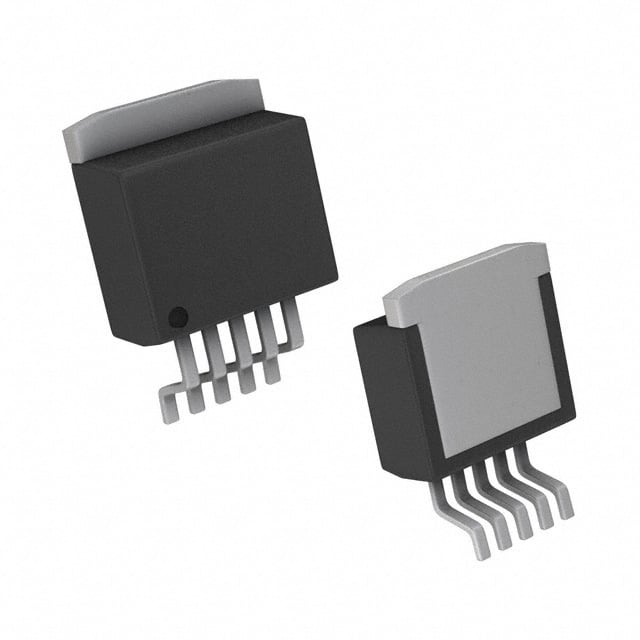ICGOO在线商城 > 集成电路(IC) > PMIC - 稳压器 - 线性 > TPS75915KTTT
- 型号: TPS75915KTTT
- 制造商: Texas Instruments
- 库位|库存: xxxx|xxxx
- 要求:
| 数量阶梯 | 香港交货 | 国内含税 |
| +xxxx | $xxxx | ¥xxxx |
查看当月历史价格
查看今年历史价格
TPS75915KTTT产品简介:
ICGOO电子元器件商城为您提供TPS75915KTTT由Texas Instruments设计生产,在icgoo商城现货销售,并且可以通过原厂、代理商等渠道进行代购。 TPS75915KTTT价格参考¥29.83-¥29.83。Texas InstrumentsTPS75915KTTT封装/规格:PMIC - 稳压器 - 线性, Linear Voltage Regulator IC Positive Fixed 1 Output 1.5V 7.5A DDPAK/TO-263-5。您可以下载TPS75915KTTT参考资料、Datasheet数据手册功能说明书,资料中有TPS75915KTTT 详细功能的应用电路图电压和使用方法及教程。
TPS75915KTTT 是 Texas Instruments(德州仪器)生产的一款线性稳压器,属于低压差(LDO)稳压器,输出电压固定为1.5V,最大输出电流可达5A。该器件具有较低的压差电压、高纹波抑制比(PSRR)和良好的负载/线路调节能力,适用于对电源稳定性要求较高的场景。 其主要应用场景包括: 1. 高性能处理器供电:如 DSP、FPGA 和 ASIC 等数字逻辑器件的核心电源供应,提供稳定低噪声电源,确保高速电路正常工作。 2. 通信设备:用于基站、网络交换设备等通信系统中,为敏感的射频(RF)模块和数据转换器(ADC/DAC)提供干净电源,降低噪声干扰。 3. 工业控制系统:在工业自动化设备中,为PLC、传感器和精密测量仪器提供可靠稳定的电源。 4. 测试与测量设备:如示波器、信号发生器等,利用其低噪声和高稳定性特点,提高测量精度。 5. 汽车电子系统:用于车载信息娱乐系统或高级驾驶辅助系统(ADAS),为关键电子部件提供稳定电压。 总之,TPS75915KTTT 适用于需要高效、稳定、低噪声直流电源的各种高性能电子系统中。
| 参数 | 数值 |
| 产品目录 | 集成电路 (IC)半导体 |
| 描述 | IC REG LDO 1.5V 7.5A DDPAK低压差稳压器 1.5-V Fixed Output 7.5-A |
| 产品分类 | |
| 品牌 | Texas Instruments |
| 产品手册 | |
| 产品图片 |
|
| rohs | 符合RoHS无铅 / 符合限制有害物质指令(RoHS)规范要求 |
| 产品系列 | 电源管理 IC,低压差稳压器,Texas Instruments TPS75915KTTT- |
| 数据手册 | |
| 产品型号 | TPS75915KTTT |
| 产品种类 | 低压差稳压器 |
| 供应商器件封装 | DDPAK/TO-263-5 |
| 其它名称 | 296-15931-1 |
| 包装 | 剪切带 (CT) |
| 单位重量 | 1.456 g |
| 商标 | Texas Instruments |
| 安装类型 | 表面贴装 |
| 安装风格 | SMD/SMT |
| 封装 | Tube |
| 封装/外壳 | TO-263-6,D²Pak(5 引线+接片),TO-263BA |
| 封装/箱体 | TO-263-5 |
| 工作温度 | -40°C ~ 125°C |
| 工厂包装数量 | 50 |
| 最大工作温度 | + 125 C |
| 最大输入电压 | 5.5 V |
| 最小工作温度 | - 40 C |
| 最小输入电压 | + 2.8 V |
| 标准包装 | 1 |
| 电压-跌落(典型值) | - |
| 电压-输入 | 2.8 V ~ 5.5 V |
| 电压-输出 | 1.5V |
| 电压调节准确度 | 3 % |
| 电流-输出 | 7.5A |
| 电流-限制(最小值) | 8A |
| 稳压器拓扑 | 正,固定式 |
| 稳压器数 | 1 |
| 系列 | TPS75915 |
| 线路调整率 | 0.04 % / V |
| 负载调节 | 0.35 % / V |
| 输入偏压电流—最大 | 0.125 mA |
| 输出电压 | 1.5 V |
| 输出电流 | 7.5 A |
| 输出端数量 | 1 Output |
| 输出类型 | Fixed |


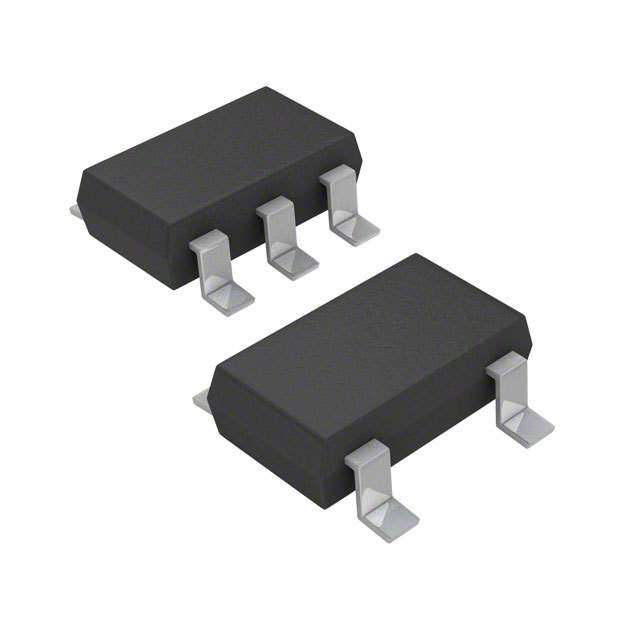

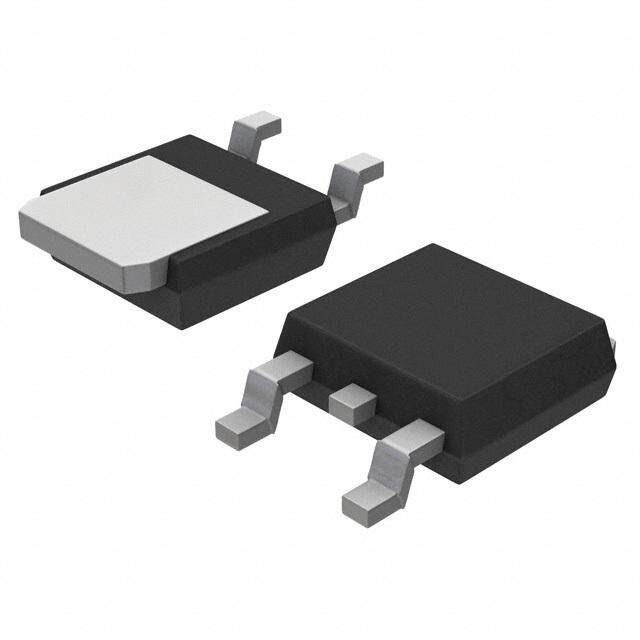
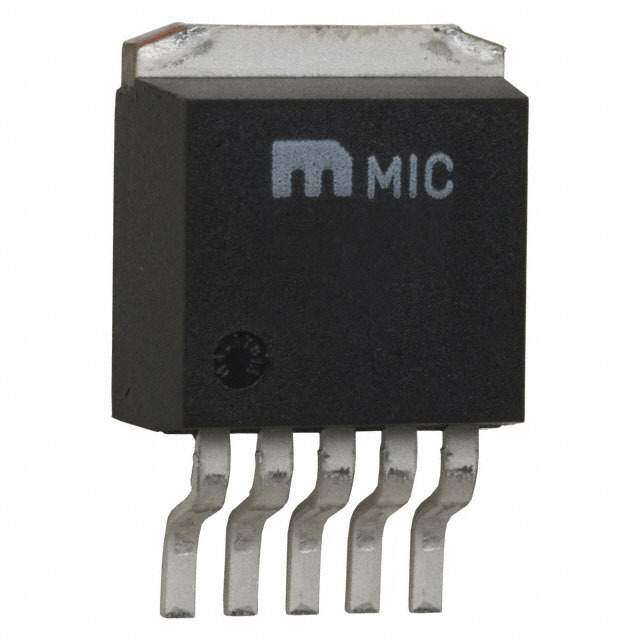
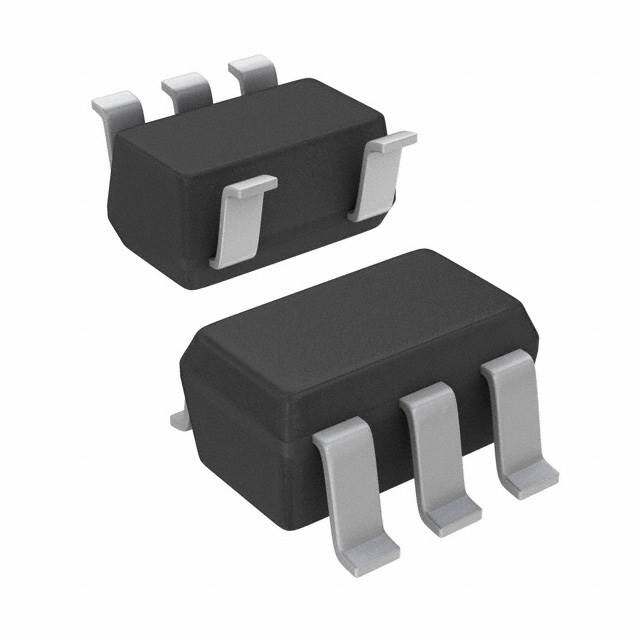



- 商务部:美国ITC正式对集成电路等产品启动337调查
- 曝三星4nm工艺存在良率问题 高通将骁龙8 Gen1或转产台积电
- 太阳诱电将投资9.5亿元在常州建新厂生产MLCC 预计2023年完工
- 英特尔发布欧洲新工厂建设计划 深化IDM 2.0 战略
- 台积电先进制程称霸业界 有大客户加持明年业绩稳了
- 达到5530亿美元!SIA预计今年全球半导体销售额将创下新高
- 英特尔拟将自动驾驶子公司Mobileye上市 估值或超500亿美元
- 三星加码芯片和SET,合并消费电子和移动部门,撤换高东真等 CEO
- 三星电子宣布重大人事变动 还合并消费电子和移动部门
- 海关总署:前11个月进口集成电路产品价值2.52万亿元 增长14.8%
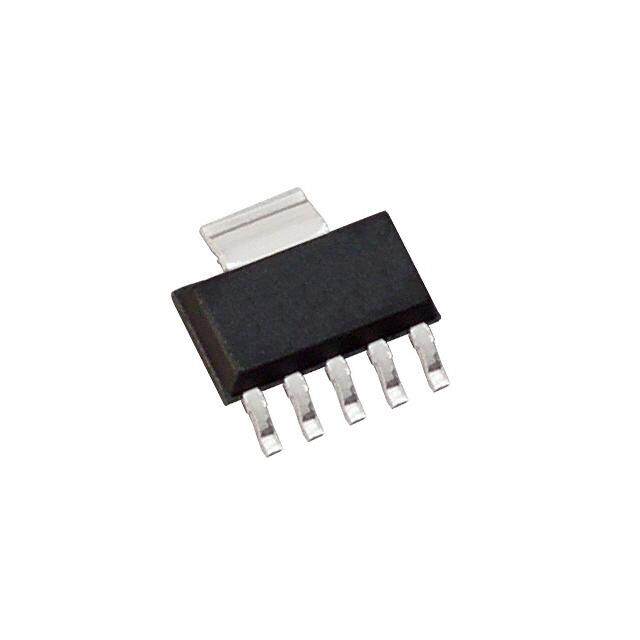

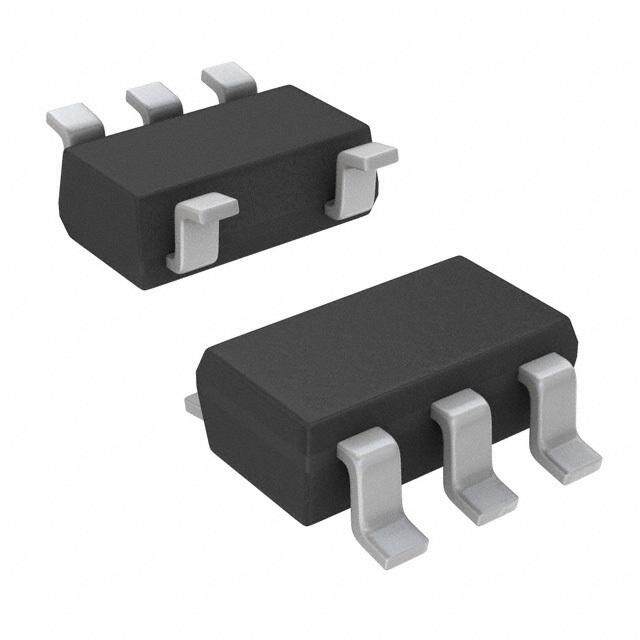




PDF Datasheet 数据手册内容提取
TPS75901, TPS75915 TPS75918, TPS75925, TPS75933 www.ti.com SLVS318E–DECEMBER2000–REVISEDMARCH2004 POWER GOOD FAST-TRANSIENT RESPONSE 7.5-A LOW-DROPOUT VOLTAGE REGULATORS FEATURES TO–220 (KC) PACKAGE • 7.5-ALow-DropoutVoltageRegulator (TOP VIEW) • Availablein1.5-V,1.8-V,2.5-V,and3.3-V EN 1 Fixed-OutputandAdjustableVersions IN 2 • OpenDrainPower-Good(PG)StatusOutput GND 3 OUTPUT 4 (FixedOptionsOnly) FB/PG 5 • DropoutVoltageTypically400mVat7.5A (TPS75933) TO–263 (KTT) PACKAGE (TOP VIEW) • Low125µATypicalQuiescentCurrent • FastTransientResponse EN 1 • 3%ToleranceOverSpecifiedConditionsfor IN 2 GND 3 Fixed-OutputVersions OUTPUT 4 • Availablein5-PinTO-220andTO-263 FB/PG 5 Surface-MountPackages • ThermalShutdownProtection DESCRIPTION The TPS759xx family of 7.5-A low dropout (LDO) regulators contains four fixed voltage option regulators with integrated power-good (PG) and an adjustable voltage option regulator. These devices are capable of supplying 7.5Aofoutputcurrentwithadropoutof400mV(TPS75933).Therefore,thedevicesarecapableofperforming a 3.3-V to 2.5-V conversion. Quiescent current is 125 µA at full load and drops below 10 µA when the devices are disabled.TheTPS759xxisdesignedtohavefasttransientresponseforlargeloadcurrentchanges. TPS75933 DROPOUT VOLTAGE TPS75915 vs LOAD TRANSIENT RESPONSE JUNCTION TEMPERATURE V 600 m 200 IO = 7.5 A age – 100 VCOo == 110.50 Vm F ddti(cid:1)1(cid:1)sA 500 olt V mV ut 0 e – 400 Outp ag n –100 olt e i V g ut 300 an –200 o h p C A – Dro 200 – VO 10 ent – DO D 5 urr V C 100 put 0 ut O – 0–40 –25 –10 –5 20 35 50 65 80 95 110 125 0 20 40 60 80 100 120 140 160 180 200 I O TJ – Junction Temperature – °C t – Time – m s Pleasebeawarethatanimportantnoticeconcerningavailability,standardwarranty,anduseincriticalapplicationsofTexas Instrumentssemiconductorproductsanddisclaimerstheretoappearsattheendofthisdatasheet. PowerPADisatrademarkofTexasInstruments. PRODUCTIONDATAinformationiscurrentasofpublicationdate. Copyright©2000–2004,TexasInstrumentsIncorporated Products conform to specifications per the terms of the Texas Instruments standard warranty. Production processing does not necessarilyincludetestingofallparameters.
TPS75901, TPS75915 TPS75918, TPS75925, TPS75933 www.ti.com SLVS318E–DECEMBER2000–REVISEDMARCH2004 Because the PMOS device behaves as a low-value resistor, the dropout voltage is very low (typically 400 mV at an output current of 7.5 A for the TPS75933) and is directly proportional to the output current. Additionally, since the PMOS pass element is a voltage-driven device, the quiescent current is very low and independent of output loading (typically 125 µA over the full range of output current, 1 mA to 7.5 A). These two key specifications yield asignificantimprovementinoperatinglifeforbattery-poweredsystems. Thedevice is enabled when ENis connected to a low-level voltage. This LDO family also features a sleep mode; applying a TTL high signal to EN (enable) shuts down the regulator, reducing the quiescent current to less than 1 µA at T = 25(cid:176)C. The power-good terminal (PG) is an active low, open drain output, which can be used to J implementapower-onresetoralow-batteryindicator. The TPS759xx is offered in 1.5-V, 1.8-V, 2.5-V, and 3.3-V fixed-voltage versions and in an adjustable version (programmable over the range of 1.22 V to 5 V). Output voltage tolerance is specified as a maximum of 3% over line, load, and temperature ranges. The TPS759xx family is available in a 5-pin TO-220 (KC) and TO-263 (KTT) packages. AVAILABLEOPTIONS OUTPUTVOLTAGE TO-220 TO-263 T J (TYP) (KC) (KTT)(1) 3.3V TPS75933KC TPS75933KTT 2.5V TPS75925KC TPS75925KTT -40(cid:176)C to125(cid:176)C 1.8V TPS75918KC TPS75918KTT 1.5V TPS75915KC TPS75915KTT Adjustable1.22Vto5V TPS75901KC TPS75901KTT (1) TheTPS75901isprogrammableusinganexternalresistordivider(seeapplicationinformation).AddTforKTTdevicesin50-piecereel. AddRforKTTdevicesin500-piecereel. 2 5 VI IN PG PG 4 OUT VO 1 m F 1 EN Co(1) + 47 m F GND 3 (1) See application information section for capacitor selection details. Figure1.TypicalApplicationConfiguration(ForFixedOutputOptions) TerminalFunctions(TPS759xx) TERMINAL I/O DESCRIPTION NAME NO. EN 1 I Enableinput FB/PG 5 I/O Feedbackinputvoltageforadjustabledevice/PGoutputforfixedoptions GND 3 Regulatorground IN 2 I Inputvoltage OUTPUT 4 O Regulatedoutputvoltage 2
TPS75901, TPS75915 TPS75918, TPS75925, TPS75933 www.ti.com SLVS318E–DECEMBER2000–REVISEDMARCH2004 FUNCTIONALBLOCKDIAGRAM-ADJUSTABLEVERSION VIN VOUT UVLO Current Sense SHUTDOWN ILIM R1 GND _ + FB EN UVLO R2 Thermal Shutdown External to the Device Vref = 1.22 V Bandgap VIN Reference FUNCTIONALBLOCKDIAGRAM-FIXEDVERSION VIN VOUT UVLO Current Sense SHUTDOWN ILIM R1 _ + GND UVLO EN R2 Thermal Shutdown Vref = 1.22 V VIN RBeafnedregnacpe PG Falling Edge Delay 3
TPS75901, TPS75915 TPS75918, TPS75925, TPS75933 www.ti.com SLVS318E–DECEMBER2000–REVISEDMARCH2004 TPS759xx PG TIMING DIAGRAM VIN1 VUVLO VUVLO t VOUT VIT+(see Note A) Threshold Voltage VIT– (see Note A) t PG Output t NOTE A: VIT –Trip voltage is typically 9% lower than the output voltage (91%VO) VIT– to VIT+ is the hysteresis voltage. DETAILED DESCRIPTION The TPS759xx family includes four fixed-output voltage regulators (1.5 V, 1.8 V, 2.5 V, and 3.3 V), and an adjustableregulator,theTPS75901(adjustablefrom1.22Vto5V).Thebandgapvoltageistypically1.22V. PIN FUNCTIONS Enable(EN) The EN terminal is an input which enables or shuts down the device. If EN is a logic high, the device will be in shutdownmode.WhenENgoestologiclow,thenthedevicewillbeenabled. Power-Good(PG) The PG terminal for the fixed voltage option devices is an open drain, active low output that indicates the status of V (output of the LDO). When V reaches approximately 91% of the regulated voltage, PG will go to a low O O impedance state. It will go to a high-impedance state when V falls below 91% (i.e., over load condition) of the O regulatedvoltage.TheopendrainoutputofthePGterminalrequiresapullupresistor. Feedback(FB) FB is an input terminal used for the adjustable-output option and must be connected to the output terminal either directly, in order to generate the minimum output voltage of 1.22 V, or through an external feedback resistor divider for other output voltages. The FB connection should be as short as possible. It is essential to route it in such a way to minimize/avoid noise pickup. Adding RC networks between FB terminal and V to filter noise is O notrecommendedbecauseitmaycausetheregulatortooscillate. 4
TPS75901, TPS75915 TPS75918, TPS75925, TPS75933 www.ti.com SLVS318E–DECEMBER2000–REVISEDMARCH2004 InputVoltage(IN) TheV terminalisaninputtotheregulator. IN OutputVoltage(OUTPUT) TheV terminalisanoutputtotheregulator. OUTPUT ABSOLUTE MAXIMUM RATINGS overoperatingjunctiontemperaturerange(unlessotherwisenoted)(1) TPS759XX Inputvoltagerange(2) V -0.3Vto6V I VoltagerangeatEN -0.3Vto6V MaximumPGvoltage(TPS759xx) 6V Peakoutputcurrent Internallylimited Continuoustotalpowerdissipation SeeDissipationRatingTable Outputvoltage V (OUTPUT,FB) 5.5V O Operatingjunctiontemperaturerange T -40(cid:176)C to150(cid:176)C J Storagetemperaturerange T -65(cid:176)C to150(cid:176)C stg ESDrating HBM 2kV CDM 500V (1) Stressesbeyondthoselistedunderabsolutemaximumratingsmaycausepermanentdamagetothedevice.Thesearestressratings only,andfunctionaloperationofthedeviceattheseoranyotherconditionsbeyondthoseindicatedunderrecommendedoperating conditionsisnotimplied.Exposuretoabsolute-maximum-ratedconditionsforextendedperiodsmayaffectdevicereliability. (2) Allvoltagevaluesarewithrespecttonetworkterminalground. DISSIPATION RATING TABLE PACKAGE RQJC ((cid:176)C/W) RQJA ((cid:176)C/W) (1) TO-220 2 58.7(2) TO-263 2 38.7(3) (1) Forbothpackages,theRQJA valueswerecomputedusingJEDEC highKboard(2S2P)with1ounceinternalcopperplaneandground plane.Therewasnoairflowacrossthepackages. (2) RQJA wascomputedassumingavertical,freestandingTO-220 packagewithpinssolderedtotheboard.Thereisnoheatsink attachedtothepackage. (3) RQJA wascomputedassumingahorizontallymountedTO-263 packagewithpinssolderedtotheboard.Thereisnocopperpad underneaththepackage. RECOMMENDED OPERATING CONDITIONS MIN MAX UNIT VI(1) Inputvoltage 2.8 5.5 V V Outputvoltagerange 1.22 5 V O I Outputcurrent 0 7.5 A O T Operatingvirtualjunctiontemperature -40 125 (cid:176)C J (1) Tocalculatetheminimuminputvoltageforyourmaximumoutputcurrent,usethefollowingequation:V =V +V . I(min) O(max) DO(maxload) 5
TPS75901, TPS75915 TPS75918, TPS75925, TPS75933 www.ti.com SLVS318E–DECEMBER2000–REVISEDMARCH2004 ELECTRICAL CHARACTERISTICS overrecommendedoperatingjunctiontemperaturerange(T =-40(cid:176)C to125(cid:176)C), V =V +1V,I =1mA,EN=0V, J I O(typ) O C =100µF(unlessotherwisenoted) O PARAMETER TESTCONDITIONS MIN TYP MAX UNIT 1.22V£ V £ 5.5V,T =25(cid:176)C V O J O 1.22V£ V £ 5.5V 0.97V 1.03V Adjustablevoltage O O O V 1.22V£ V £ 5.5V,T =0to 125(cid:176)C (2) O J 0.98VO 1.02VO T =25(cid:176)C, 2.8V<V <5.5V 1.5 J I 1.5VOutput 2.8V£ V £ 5.5V 1.455 1.545 I Outputvoltage(1) T =25(cid:176)C, 2.8V<V <5.5V 1.8 V J I 1.8VOutput 2.8V£ V £ 5.5V 1.746 1.854 I T =25(cid:176)C, 3.5V<V <5.5V 2.5 J I 2.5VOutput V 3.5V£ V £ 5.5V 2.425 2.575 I T =25(cid:176)C, 4.3V<V <5.5V 3.3 J I 3.3VOutput V 4.3V£ V £ 5.5V 3.201 3.399 I T =25(cid:176)C 125 Quiescentcurrent(GNDcurrent)(3),(4) J µA 200 V +1V£ V£ 5.5V,T =25(cid:176)C 0.04 Outputvoltagelineregulation(DV /V )(4) O I J %/V O O V +1V£ V <5.5V 0.1 O I Loadregulation(3) 0.35 %/V BW=300Hzto50kHz,T =25(cid:176)C, Outputnoisevoltage TPS75915 J 35 µVrms V =2.8V I Outputcurrentlimit V =0V 8 10 14 A O Thermalshutdownjunctiontemperature 150 (cid:176)C EN=V ,T =25(cid:176)C 0.1 µA I J Standbycurrent EN=V 10 µA I FBinputcurrent TPS75901 FB=1.5V -1 1 µA Powersupplyripplerejec- f=100Hz,T =25(cid:176)C, V =2.8V, TPS75915 J I 58 dB tion I =7.5A O MinimuminputvoltageforvalidPG I =300µA,V £ 0.8V 0 V O(PG) (PG) PGtripthresholdvoltage Fixedoptionsonly V decreasing 89 93 %V O O PGhysteresisvoltage Fixedoptionsonly MeasuredatV 0.5 %V O O PGoutputlowvoltage Fixedoptionsonly V =2.8V,I =1mA 0.15 0.4 V I O(PG) PGleakagecurrent Fixedoptionsonly V =5V 1 µA (PG) EN=V -1 1 µA I Inputcurrent(EN) EN=0V -1 0 1 µA HighlevelENinputvoltage 2 V LowlevelENinputvoltage 0.7 V (1) I =0mAto7.5A O (2) Theadjustableoptionoperateswitha2%toleranceoverT =0to125(cid:176)C. J (3) I =0mAto7.5A O (4) IfV £ 1.8VthenV =2.8V,V =5.5V: O Imin Imax Line regulator (mV)(cid:3)(%V)(cid:1)VO(cid:4)VIm1ax00(cid:2)2.8V(cid:5)(cid:1)1000 IfV ‡ 2.5VthenV =V +1V,V =5.5V: O Imin O Imax Line regulator (mV)(cid:4)(%V)(cid:1)VO(cid:5)VImax(cid:3)10(cid:5)0VO(cid:2)1V(cid:6)(cid:6)(cid:1)1000 6
TPS75901, TPS75915 TPS75918, TPS75925, TPS75933 www.ti.com SLVS318E–DECEMBER2000–REVISEDMARCH2004 ELECTRICAL CHARACTERISTICS (continued) overrecommendedoperatingjunctiontemperaturerange(T =-40(cid:176)C to125(cid:176)C), V =V +1V,I =1mA,EN=0V, J I O(typ) O C =100µF(unlessotherwisenoted) O PARAMETER TESTCONDITIONS MIN TYP MAX UNIT Dropoutvoltage(3.3Vout- IO=7.5A,VI=3.2V,TJ=25(cid:176)C 400 mV V put)(5) I =7.5A,V =3.2V 750 mV O O I Dischargetransistorcurrent VO=1.5V,T =25(cid:176)C 10 25 mA J UVLO T =25(cid:176)C, V rising 2.2 2.75 V J I V I UVLOhysteresis T =25(cid:176)C, V falling 100 mV J I (5) INvoltageequalsV (Typ)-100mV;TPS75915,TPS75918,andTPS75925dropoutvoltagelimitedbyinputvoltagerangelimitations O (i.e.,TPS75933inputvoltageissetto3.2Vforthepurposeofthistest). 7
TPS75901, TPS75915 TPS75918, TPS75925, TPS75933 www.ti.com SLVS318E–DECEMBER2000–REVISEDMARCH2004 TYPICAL CHARACTERISTICS Table of Graphs FIGURE vsOutputcurrent 2,3 V Outputvoltage O vsJunctiontemperature 4,5 Groundcurrent vsJunctiontemperature 6 Powersupplyripplerejection vsFrequency 7 Outputspectralnoisedensity vsFrequency 8 z Outputimpedance vsFrequency 9 o vsInputvoltage 10 V Dropoutvoltage DO vsJunctiontemperature 11 V Minimumrequiredinputvoltage vsOutputvoltage 12 I Linetransientresponse 13,15 Loadtransientresponse 14,16 V Outputvoltageandenablevoltage vsTime(start-up) 17 O Equivalentseriesresistance(ESR) vsOutputcurrent 19,20 TPS75933 TPS75915 OUTPUTVOLTAGE OUTPUTVOLTAGE vs vs OUTPUTCURRENT OUTPUTCURRENT 3.345 1.545 VI = 4.3 V VI = 2.8 V TJ = 25°C TJ = 25°C 3.330 1.530 V V − 3.315 − 1.515 e e g g a a olt olt V 3.3 V 1.5 ut ut p p ut ut O O − 3.285 − 1.485 O O V V 3.270 1.470 3.255 1.455 0 1.5 3 4.5 6 7.5 0 1.5 3 4.5 6 7.5 IO − Output Current − A IO − Output Current − A Figure2. Figure3. 8
TPS75901, TPS75915 TPS75918, TPS75925, TPS75933 www.ti.com SLVS318E–DECEMBER2000–REVISEDMARCH2004 TYPICAL CHARACTERISTICS (continued) TPS75933 TPS75915 OUTPUTVOLTAGE OUTPUTVOLTAGE vs vs JUNCTIONTEMPERATURE JUNCTIONTEMPERATURE 3.345 1.545 VI = 4.3 V VI = 2.8 V 3.33 1.530 V V − 3.315 − 1.515 e e g g a a olt olt V 3.3 V 1.5 ut ut p p ut ut O O − 3.285 − 1.485 O O V V 3.270 1.470 3.255 1.455 −40 −25 10 5 20 35 50 65 80 95 110125 −40−25 −10 5 20 35 50 65 80 95 110 125 TJ − Junction Temperature − °C TJ − Junction Temperature − °C Figure4. Figure5. TPS759xx TPS75933 GROUNDCURRENT POWERSUPPLYRIPPLEREJECTION vs vs JUNCTIONTEMPERATURE FREQUENCY 118 90 VI = 5 V B VI = 4.3 V 116 IO = 7.5 A n − d 80 CTJo == 2150°0C m F o 70 114 cti IO = 1 mA e A ej 60 R mnt − 112 pple 50 urre 110 y Ri 40 C pl und 108 Sup 30 ro er IO = 7.5 A G w 20 106 Po R − 10 104 R PS 0 102 −40 −25 −10 5 20 35 50 65 80 95 110 125 10 100 1k 10k 100k 1M 10M TJ − Junction Temperature − °C f − Frequency − Hz Figure6. Figure7. 9
TPS75901, TPS75915 TPS75918, TPS75925, TPS75933 www.ti.com SLVS318E–DECEMBER2000–REVISEDMARCH2004 TYPICAL CHARACTERISTICS (continued) TPS75933 TPS75933 OUTPUTSPECTRALNOISEDENSITY OUTPUTIMPEDANCE vs vs FREQUENCY FREQUENCY 2.5 100 VI = 4.3 V VI = 4.3 V V/Hz 2 VCTJOo === 21350.3°0C Vm F 10 CTJo == 2150°0C m F IO = 1 mA mDensity − 1.5 IO = 7.5 A Wpedance − 0.11 e m ois IO = 1 mA ut I 0.01 al N 1 utp r O ect − 0.001 IO = 7.5 A p o S z ut 0.5 p ut 0.0001 O 0 0.00001 1100 100 1k 10k 100k 10 100 1k 10k 100k 1M 10M f − Frequency − Hz f − Frequency − Hz Figure8. Figure9. TPS75901 TPS75933 DROPOUTVOLTAGE DROPOUTVOLTAGE vs vs INPUTVOLTAGE JUNCTIONTEMPERATURE 700 600 IO = 7.5 A IO = 7.5 A 600 500 V V − m 500 TJ = 125°C − m e e 400 g g a a olt 400 olt ut V TJ = 25°C ut V 300 o o p 300 p o o − Dr TJ = −40°C − Dr 200 O 200 O D D V V 100 100 0 0 2.5 3 3.5 4 4.5 5 −40 −25 −10 −5 20 35 50 65 80 95 110 125 VI − Input Voltage − V TJ − Junction Temperature − °C Figure10. Figure11. 10
TPS75901, TPS75915 TPS75918, TPS75925, TPS75933 www.ti.com SLVS318E–DECEMBER2000–REVISEDMARCH2004 TYPICAL CHARACTERISTICS (continued) MINIMUMREQUIREDINPUTVOLTAGE vs TPS75915 OUTPUTVOLTAGE LINETRANSIENTRESPONSE 4 IO = 7.5 A mV VO = 1.5 V e − V TJ = 125°C age − 50 ICOo = = 71.050 A m F Voltag TJ = 25°C ut Volt 0 nput TJ = −40°C Outp −50 ed I 3 e in −100 uir ng eq 2.8 ha V R C − m − e u O ag Minim DV 3.7 ut Volt − 2.8 p VI − In 2 VI 0 50 100 150 200 250 300 350 400 450 500 1.5 1.75 2 2.25 2.5 2.75 3 3.25 3.5 t − Time − m s VO − Output Voltage − V Figure12. Figure13. TPS75915 TPS75933 LOADTRANSIENTRESPONSE LINETRANSIENTRESPONSE 200 Output Voltage − mV −1100000 VCOo == 110.50 Vm F ddti(cid:1)1(cid:1)sA Output Voltage − mV −55000 VICOOo = == 7 13.50.3 0A Vm F − Change in VO−200 150 Current − A − Change in VO−100 5.3 oltage − V D put D ut V 0 ut 4.3 np − O − I 0 20 40 60 80 100 120 140 160 180 200 I O 0 50 100 150 200 250 300 350 400 450 500 VI t − Time − m s t − Time − m s Figure14. Figure15. 11
TPS75901, TPS75915 TPS75918, TPS75925, TPS75933 www.ti.com SLVS318E–DECEMBER2000–REVISEDMARCH2004 TYPICAL CHARACTERISTICS (continued) TPS75933 OUTPUTVOLTAGEANDENABLEVOLTAGE TPS75933 vs LOADTRANSIENTRESPONSE TIME(START-UP) 200 put Voltage − mV 1000 VCOo == 130.30 Vm F di(cid:1)1A utput Voltage − V 3.3 VITOJI === 1420.53 °m CVA ut −100 dt (cid:1)s O O − n O e i −200 V 0 g n A − ChaO 170.5urrent − ge − V 4.3 V 5 C a 0 D put Volt 0 Out ble − na I O E 0 20 40 60 80 100 120 140 160 180 200 0 0.2 0.4 0.6 0.8 1 t − Time − m s t − Time (Start-Up) − ms Figure16. Figure17. 12
TPS75901, TPS75915 TPS75918, TPS75925, TPS75933 www.ti.com SLVS318E–DECEMBER2000–REVISEDMARCH2004 TYPICAL CHARACTERISTICS (continued) To Load VI IN OUT + Co RL EN GND ESR Figure18.TestCircuitforTypicalRegionsofStability (SeeFigure19andFigure20)(FixedOutputOptions) TYPICALREGIONOFSTABILITY TYPICALREGIONOFSTABILITY EQUIVALENTSERIESRESISTANCE(A) EQUIVALENTSERIESRESISTANCE(A) vs vs OUTPUTCURRENT OUTPUTCURRENT 10 10 Co = 680 m F Co = 47 m F Wce − TJ = 25°C We − TJ = 25°C n c a n Resist 1 esista 1 es Region of Stability s R Region of Stability Seri erie ent nt S val ale 0.2 qui 0.1 uiv E q SR − R − E Region of Instability E S E 0.015 Region of Instability 0.01 0.01 0 1.5 3 4.5 6 7.5 0 1.5 3 4.5 6 7.5 IO − Output Current − A IO − Output Current − A Figure19. Figure20. A. Equivalent series resistance (ESR) refers to the total series resistance, including the ESR of the capacitor, ay seriesresistanceaddedexternally,andPWBtraceresistancetoC . O 13
TPS75901, TPS75915 TPS75918, TPS75925, TPS75933 www.ti.com SLVS318E–DECEMBER2000–REVISEDMARCH2004 THERMAL INFORMATION The amount of heat that an LDO linear regulator generates is directly proportional to the amount of power it dissipates during operation. All integrated circuits have a maximum allowable junction temperature (T max) J above which normal operation is not assured. A system designer must design the operating environment so that the operating junction temperature (T ) does not exceed the maximum junction temperature (T max). The two J J main environmental variables that a designer can use to improve thermal performance are air flow and external heatsinks. The purpose of this information is to aid the designer in determining the proper operating environment foralinearregulatorthatisoperatingataspecificpowerlevel. Ingeneral,themaximumexpectedpower(P )consumedbyalinearregulatoriscomputedas: D(max) (cid:5) (cid:6) PDmax(cid:4) VI(avg)(cid:3)VO(avg) (cid:1)IO(avg) (cid:2) VI(avg)xI(Q) (1) Where: • V istheaverageinputvoltage. I(avg) • V istheaverageoutputvoltage. O(avg) • I istheaverageoutputcurrent. O(avg) • I isthequiescentcurrent. (Q) For most TI LDO regulators, the quiescent current is insignificant compared to the average output current; therefore, the term V x I can be neglected. The operating junction temperature is computed by adding the I(avg) (Q) ambient temperature (T ) and the increase in temperature due to the regulator's power dissipation. The A temperature rise is computed by multiplying the maximum expected power dissipation by the sum of the thermal resistances between the junction and the case (RQJC ), the case to heatsink (RQCS ), and the heatsink to ambient (RQSA ). Thermal resistances are measures of how effectively an object dissipates heat. Typically, the larger the device,themoresurfaceareaavailableforpowerdissipationandthelowertheobject'sthermalresistance. Figure 21 illustrates these thermal resistances for (a) a TO-220 package attached to a heatsink, and (b) a TO-263packagemountedonaJEDECHigh-Kboard. C B A TJ A Rq JC A B B TC Rq CS C Rq SA C TO–263 Package TA (b) TO–220 Package (a) Figure21.ThermalResistances 14
TPS75901, TPS75915 TPS75918, TPS75925, TPS75933 www.ti.com SLVS318E–DECEMBER2000–REVISEDMARCH2004 THERMAL INFORMATION (continued) Equation2summarizesthecomputation: TJ (cid:2) TA(cid:1)PDmaxx(cid:3)Rq JC (cid:1) Rq CS (cid:1) Rq SA(cid:4) (2) The RQJC is specific to each regulator as determined by its package, lead frame, and die size provided in the regulator's data sheet. The RQSA is a function of the type and size of heatsink. For example, black body radiator type heatsinks, like the one attached to the TO-220 package in Figure 21(a), can have RQCS values ranging from 5(cid:176)C/W for very large heatsinks to 50(cid:176)C/W for very small heatsinks. The RQCS is a function of how the package is attached to the heatsink. For example, if a thermal compound is used to attach a heatsink to a TO-220 package, RQCS of1(cid:176)C/W isreasonable. Even if no external black body radiator type heatsink is attached to the package, the board on which the regulator is mounted will provide some heatsinking through the pin solder connections. Some packages, like the TO-263 and TI's TSSOP PowerPAD™ packages, use a copper plane underneath the package or the circuit board's ground plane for additional heatsinking to improve their thermal performance. Computer aided thermal modeling can be used to compute very accurate approximations of an integrated circuit's thermal performance in different operating environments (e.g., different types of circuit boards, different types and sizes of heatsinks, different air flows, etc.). Using these models, the three thermal resistances can be combined into one thermal resistance between junction and ambient (RQJA ). This RQJA is valid only for the specific operating environment usedinthecomputermodel. Equation2simplifiesintoEquation3: T (cid:2) T (cid:1)P maxx R J A D q JA (3) RearrangingEquation3givesEquation4: T –T R (cid:1) J A q JA P max D (4) Using Equation 3 and the computer model generated curves shown in Figure 22 and Figure 25, a designer can quickly compute the required heatsink thermal resistance/board area for a given ambient temperature, power dissipation,andoperatingenvironment. TO-220 POWER DISSIPATION The TO-220 package provides an effective means of managing power dissipation in through-hole applications. The TO-220 package dimensions are provided in the Mechanical Data section at the end of the data sheet. A heatsinkcanbeusedwiththeTO-220packagetoeffectivelylowerthejunction-to-ambientthermalresistance. To illustrate, the TPS75925 in a TO-220 package was chosen. For this example, the average input voltage is 3.3V,theoutputvoltageis2.5V,theaverageoutputcurrentis3A,theambienttemperature55(cid:176)C, the air flow is 150 LFM, and the operating environment is the same as documented below. Neglecting the quiescent current, themaximumaveragepoweris: P max (cid:1) (3.3–2.5)Vx3A (cid:1) 2.4W D (5) SubstitutingT maxforT intoEquation4givesEquation6: J J Rq JAmax (cid:1) (125–55)°C(cid:2)2.4W (cid:1) 29°C(cid:2)W (6) From Figure 22, RQJA vs Heatsink Thermal Resistance, a heatsink with RQSA = 22(cid:176)C/W is required to dissipate 2.4 W. The model operating environment used in the computer model to construct Figure 22 consisted of a standard JEDEC High-K board (2S2P) with a 1 oz. internal copper plane and ground plane. Since the package pins were soldered to the board, 450 mm2 of the board was modeled as a heatsink. Figure 23 shows the side viewoftheoperatingenvironmentusedinthecomputermodel. 15
TPS75901, TPS75915 TPS75918, TPS75925, TPS75933 www.ti.com SLVS318E–DECEMBER2000–REVISEDMARCH2004 THERMAL INFORMATION (continued) 65 Natural Convection W 55 C/ ° − Air Flow = 150 LFM e 45 nc Air Flow = 250 LFM a st Air Flow = 500 LFM esi 35 R al m er 25 h T − A J 15 Rq No Heatsink 5 25 20 15 10 5 0 Rq SA − Heatsink Thermal Resistance − °C/W Figure22.ThermalResistancevsHeatsinkThermalResistance 0.21 mm 0.21 mm 1 oz. Copper 1 oz. Copper Power Plane Ground Plane Figure23. From the data in Figure 22 and rearranging Equation 4, the maximum power dissipation for a different heatsink RQSA andaspecificambienttemperaturecanbecomputed(seeFigure24). 16
TPS75901, TPS75915 TPS75918, TPS75925, TPS75933 www.ti.com SLVS318E–DECEMBER2000–REVISEDMARCH2004 THERMAL INFORMATION (continued) 10 TA = 55°C W Air Flow = 500 LFM − mit Air Flow = 250 LFM Li n atio Air Flow = 150 LFM p si s Di er w o P − D P Natural Convection No Heatsink 1 20 10 0 Rq SA − Heatsink Thermal Resistance − °C/W Figure24.PowerDissipationvsHeatsinkThermalResistance The TO-263 package provides an effective means of managing power dissipation in surface mount applications. The TO-263 package dimensions are provided in the Mechanical Data section at the end of the data sheet. The addition of a copper plane directly underneath the TO-263 package enhances the thermal performance of the package. To illustrate, the TPS75925 in a TO-263 package was chosen. For this example, the average input voltage is 3.3V, the output voltage is 2.5 V, the average output current is 3 A, the ambient temperature 55(cid:176)C, the air flow is 150 LFM, and the operating environment is the same as documented below. Neglecting the quiescent current, themaximumaveragepoweris: P max (cid:1) (3.3–2.5)Vx3A (cid:1) 2.4W D (7) SubstitutingT maxforT intoEquation4givesEquation8: J J Rq JAmax (cid:1) (125–55)°C(cid:2)2.4W (cid:1) 29°C(cid:2)W (8) From Figure 25, RQJA vs Copper Heatsink Area, the ground plane needs to be 2 cm2 for the part to dissipate 2.4W. The model operating environment used in the computer model to construct Figure 25 consisted of a standard JEDEC High-K board (2S2P) with a 1 oz. internal copper plane and ground plane. The package is soldered to a 2 oz. copper pad. The pad is tied through thermal vias to the 1 oz. ground plane. Figure 26 shows thesideviewoftheoperatingenvironmentusedinthecomputermodel. 17
TPS75901, TPS75915 TPS75918, TPS75925, TPS75933 www.ti.com SLVS318E–DECEMBER2000–REVISEDMARCH2004 THERMAL INFORMATION (continued) 40 No Air Flow W C/ 35 ° − e 150 LFM c n a st 30 si Re 250 LFM al m er 25 h T − A J Rq 20 15 0 0.01 0.1 1 10 100 Copper Heatsink Area − cm2 Figure25.ThermalResistancevsCopperHeatsinkArea 2 oz. Copper Solder Pad with 25 Thermal Vias 1 oz. Copper Power Plane 1 oz. Copper Ground Plane Thermal Vias, 0.3 mm Diameter, 1.5 mm Pitch Figure26. From the data in Figure 25 and rearranging Equation 4, the maximum power dissipation for a different ground planeareaandaspecificambienttemperaturecanbecomputed(seeFigure27). 18
TPS75901, TPS75915 TPS75918, TPS75925, TPS75933 www.ti.com SLVS318E–DECEMBER2000–REVISEDMARCH2004 THERMAL INFORMATION (continued) 5 TA = 55°C W − n atio 4 250 LFM p si s Di er 150 LFM w 3 o P m u m xi No Air Flow a M 2 − D P 1 0 0.01 0.1 1 10 100 Copper Heatsink Area − cm2 Figure27.MaximumPowerDissipationvsCopperHeatsinkArea 19
TPS75901, TPS75915 TPS75918, TPS75925, TPS75933 www.ti.com SLVS318E–DECEMBER2000–REVISEDMARCH2004 APPLICATION INFORMATION PROGRAMMING THE TPS75901 ADJUSTABLE LDO REGULATOR The output voltage of the TPS75901 adjustable regulator is programmed using an external resistor divider as showninFigure28.Theoutputvoltageiscalculatedusing: (cid:4) R1(cid:5) VO(cid:3)Vref(cid:1) 1(cid:2)R2 Where: V = 1.224 V typ (the internal reference voltage) ref (9) Resistors R1 and R2 should be chosen for approximately 40-µA divider current. Lower value resistors can be used but offer no inherent advantage and waste more power. Higher values should be avoided as leakage currents at FB increase the output voltage error. The recommended design procedure is to choose R2 = 30.1kW tosetthedividercurrentat40µAandthencalculateR1using: (cid:4)V (cid:5) O R1(cid:3) (cid:2)1 (cid:1)R2 V ref (10) TPS75901 OUTPUT VOLTAGE PROGRAMMING GUIDE VI IN 1 m F OUTPUT ≥ 2 V VOLTAGE R1 R2 UNIT EN OUT VO 2.5 V 31.6 30.1 kW ≤ 0.7 V R1 Co 3.3 V 51 30.1 kW FB 3.6 V 58.3 30.1 kW GND R2 Figure28.TPS75901AdjustableLDORegulatorProgramming REGULATOR PROTECTION The TPS759xx PMOS-pass transistor has a built-in back diode that conducts reverse currents when the input voltage drops below the output voltage (e.g., during power down). Current is conducted from the output to the input and is not internally limited. When extended reverse voltage is anticipated, external limiting may be appropriate. The TPS759xx also features internal current limiting and thermal protection. During normal operation, the TPS759xx limits output current to approximately 10 A. When current limiting engages, the output voltage scales back linearly until the overcurrent condition ends. While current limiting is designed to prevent gross device failure,careshouldbetakennottoexceed the power dissipation ratings of the package. If the temperature of the device exceeds 150(cid:176)C (typ), thermal-protection circuitry shuts it down. Once the device has cooled below 130(cid:176)C (typ),regulatoroperationresumes. INPUT CAPACITOR For a typical application, a ceramic input bypass capacitor (0.22 µF-1 µF) is recommended to ensure device stability.Thiscapacitorshouldbeas close as possible to the input pin. Due to the impedance of the input supply, large transient currents will cause the input voltage to droop. If this droop causes the input voltage to drop below the UVLO threshold, the device will turn off. Therefore, it is recommended that a larger capacitor be placed in parallel with the ceramic bypass capacitor at the regulator's input. The size of this capacitor depends on the output current, response time of the main power supply, and the main power supply's distance to the regulator. At a minimum, the capacitor should be sized to ensure that the input voltage does not drop below the minimum UVLOthresholdvoltageduringnormaloperatingconditions. 20
TPS75901, TPS75915 TPS75918, TPS75925, TPS75933 www.ti.com SLVS318E–DECEMBER2000–REVISEDMARCH2004 APPLICATION INFORMATION (continued) OUTPUT CAPACITOR As with most LDO regulators, the TPS759xx requires an output capacitor connected between OUT and GND to stabilize the internal control loop. The minimum recommended capacitance value is 47 µF with an ESR (equivalent series resistance) of at least 200 mW. As shown in Figure 29, most capacitor and ESR combinations withaproductof47e-6x0.2=9.4e-6orlargerwillbestable, provided the capacitor value is at least 47 µF. Solid tantalum electrolytic and aluminum electrolytic capacitors are all suitable, provided they meet the requirements describedinthissection.Largercapacitorsprovideawiderrangeofstabilityandbetterloadtransientresponse. This information along with the ESR graphs, Figure 19, Figure 20, and Figure 29, is included to assist in selection of suitable capacitance for the user's application. When necessary to achieve low height requirements along with high output current and/or high load capacitance, several higher ESR capacitors can be used in paralleltomeettheseguidelines. 1000 Region of Stability F m− e c n a cit ESR min x Co = Constant pa 100 a C ut p ut 47 O Region of Instability Y = ESRmin x Co 10 0.01 0.1 0.2 ESR − Equivalent Series Resistance − W Figure29.OutputCapacitancevsEquivalentSeriesResistance 21
PACKAGE OPTION ADDENDUM www.ti.com 6-Feb-2020 PACKAGING INFORMATION Orderable Device Status Package Type Package Pins Package Eco Plan Lead/Ball Finish MSL Peak Temp Op Temp (°C) Device Marking Samples (1) Drawing Qty (2) (6) (3) (4/5) TPS75901KC ACTIVE TO-220 KC 5 50 Green (RoHS Call TI | SN N / A for Pkg Type -40 to 125 75901 & no Sb/Br) TPS75901KCG3 ACTIVE TO-220 KC 5 50 Green (RoHS SN N / A for Pkg Type -40 to 125 75901 & no Sb/Br) TPS75901KTTR ACTIVE DDPAK/ KTT 5 500 Green (RoHS Call TI | SN Level-2-260C-1 YEAR -40 to 125 75901 TO-263 & no Sb/Br) TPS75915KC ACTIVE TO-220 KC 5 50 Green (RoHS Call TI | SN N / A for Pkg Type -40 to 125 75915 & no Sb/Br) TPS75915KTTR ACTIVE DDPAK/ KTT 5 500 Green (RoHS Call TI | SN Level-2-260C-1 YEAR -40 to 125 75915 TO-263 & no Sb/Br) TPS75918KC ACTIVE TO-220 KC 5 50 Green (RoHS Call TI | SN N / A for Pkg Type -40 to 125 75918 & no Sb/Br) TPS75918KTTT ACTIVE DDPAK/ KTT 5 50 Green (RoHS Call TI | SN Level-2-260C-1 YEAR 75918 TO-263 & no Sb/Br) TPS75925KC ACTIVE TO-220 KC 5 50 Green (RoHS Call TI | SN N / A for Pkg Type -40 to 125 75925 & no Sb/Br) TPS75925KTTT ACTIVE DDPAK/ KTT 5 50 Green (RoHS Call TI | SN Level-2-260C-1 YEAR 75925 TO-263 & no Sb/Br) TPS75933KC ACTIVE TO-220 KC 5 50 Green (RoHS Call TI | SN N / A for Pkg Type -40 to 125 75933 & no Sb/Br) TPS75933KTTR ACTIVE DDPAK/ KTT 5 500 Green (RoHS Call TI | SN Level-2-260C-1 YEAR -40 to 125 75933 TO-263 & no Sb/Br) (1) The marketing status values are defined as follows: ACTIVE: Product device recommended for new designs. LIFEBUY: TI has announced that the device will be discontinued, and a lifetime-buy period is in effect. NRND: Not recommended for new designs. Device is in production to support existing customers, but TI does not recommend using this part in a new design. PREVIEW: Device has been announced but is not in production. Samples may or may not be available. OBSOLETE: TI has discontinued the production of the device. (2) RoHS: TI defines "RoHS" to mean semiconductor products that are compliant with the current EU RoHS requirements for all 10 RoHS substances, including the requirement that RoHS substance do not exceed 0.1% by weight in homogeneous materials. Where designed to be soldered at high temperatures, "RoHS" products are suitable for use in specified lead-free processes. TI may reference these types of products as "Pb-Free". RoHS Exempt: TI defines "RoHS Exempt" to mean products that contain lead but are compliant with EU RoHS pursuant to a specific EU RoHS exemption. Green: TI defines "Green" to mean the content of Chlorine (Cl) and Bromine (Br) based flame retardants meet JS709B low halogen requirements of <=1000ppm threshold. Antimony trioxide based flame retardants must also meet the <=1000ppm threshold requirement. Addendum-Page 1
PACKAGE OPTION ADDENDUM www.ti.com 6-Feb-2020 (3) MSL, Peak Temp. - The Moisture Sensitivity Level rating according to the JEDEC industry standard classifications, and peak solder temperature. (4) There may be additional marking, which relates to the logo, the lot trace code information, or the environmental category on the device. (5) Multiple Device Markings will be inside parentheses. Only one Device Marking contained in parentheses and separated by a "~" will appear on a device. If a line is indented then it is a continuation of the previous line and the two combined represent the entire Device Marking for that device. (6) Lead/Ball Finish - Orderable Devices may have multiple material finish options. Finish options are separated by a vertical ruled line. Lead/Ball Finish values may wrap to two lines if the finish value exceeds the maximum column width. Important Information and Disclaimer:The information provided on this page represents TI's knowledge and belief as of the date that it is provided. TI bases its knowledge and belief on information provided by third parties, and makes no representation or warranty as to the accuracy of such information. Efforts are underway to better integrate information from third parties. TI has taken and continues to take reasonable steps to provide representative and accurate information but may not have conducted destructive testing or chemical analysis on incoming materials and chemicals. TI and TI suppliers consider certain information to be proprietary, and thus CAS numbers and other limited information may not be available for release. In no event shall TI's liability arising out of such information exceed the total purchase price of the TI part(s) at issue in this document sold by TI to Customer on an annual basis. Addendum-Page 2
PACKAGE MATERIALS INFORMATION www.ti.com 12-Jun-2019 TAPE AND REEL INFORMATION *Alldimensionsarenominal Device Package Package Pins SPQ Reel Reel A0 B0 K0 P1 W Pin1 Type Drawing Diameter Width (mm) (mm) (mm) (mm) (mm) Quadrant (mm) W1(mm) TPS75901KTTR DDPAK/ KTT 5 500 330.0 24.4 10.6 15.6 4.9 16.0 24.0 Q2 TO-263 TPS75915KTTR DDPAK/ KTT 5 500 330.0 24.4 10.6 15.6 4.9 16.0 24.0 Q2 TO-263 TPS75918KTTT DDPAK/ KTT 5 50 330.0 24.4 10.6 15.6 4.9 16.0 24.0 Q2 TO-263 TPS75925KTTT DDPAK/ KTT 5 50 330.0 24.4 10.6 15.6 4.9 16.0 24.0 Q2 TO-263 TPS75933KTTR DDPAK/ KTT 5 500 330.0 24.4 10.6 15.6 4.9 16.0 24.0 Q2 TO-263 PackMaterials-Page1
PACKAGE MATERIALS INFORMATION www.ti.com 12-Jun-2019 *Alldimensionsarenominal Device PackageType PackageDrawing Pins SPQ Length(mm) Width(mm) Height(mm) TPS75901KTTR DDPAK/TO-263 KTT 5 500 367.0 367.0 45.0 TPS75915KTTR DDPAK/TO-263 KTT 5 500 367.0 367.0 45.0 TPS75918KTTT DDPAK/TO-263 KTT 5 50 367.0 367.0 45.0 TPS75925KTTT DDPAK/TO-263 KTT 5 50 367.0 367.0 45.0 TPS75933KTTR DDPAK/TO-263 KTT 5 500 367.0 367.0 45.0 PackMaterials-Page2
PACKAGE OUTLINE KC0005A TO-220 - 16.51 mm max height SCALE 0.850 TO-220 4.83 B 4.06 10.67 1.40 AAAAA 8.89 3.05 9.65 1.14 6.86 2.54 6.86 (6.275) 5.69 3.71-3.96 OPTIONAL 12.88 CHAMFER 10.08 16.51 2X (R1) MAX OPTIONAL 9.25 7.67 (4.25) C PIN 1 ID (OPTIONAL) NOTE 3 14.73 12.29 1 5 0.61 1.02 5X 0.30 0.64 3.05 0.25 C A B 2.03 4X 1.7 6.8 1 5 4215009/A 01/2017 NOTES: 1. All controlling linear dimensions are in inches. Dimensions in brackets are in millimeters. Any dimension in brackets or parenthesis are for reference only. Dimensioning and tolerancing per ASME Y14.5M. 2. This drawing is subject to change without notice. 3. Shape may vary per different assembly sites. www.ti.com
EXAMPLE BOARD LAYOUT KC0005A TO-220 - 16.51 mm max height TO-220 4X (1.45) PKG 0.07 MAX METAL 0.07 MAX ALL AROUND (1.45) TYP ALL AROUND PKG (2) 4X (2) 1 5 (R0.05) TYP SOLDER MASK FULL R (1.7) TYP OPENING, TYP TYP 5X ( 1.2) (6.8) LAND PATTERN NON-SOLDER MASK DEFINED SCALE:12X 4215009/A 01/2017 www.ti.com
None
None
IMPORTANTNOTICEANDDISCLAIMER TI PROVIDES TECHNICAL AND RELIABILITY DATA (INCLUDING DATASHEETS), DESIGN RESOURCES (INCLUDING REFERENCE DESIGNS), APPLICATION OR OTHER DESIGN ADVICE, WEB TOOLS, SAFETY INFORMATION, AND OTHER RESOURCES “AS IS” AND WITH ALL FAULTS, AND DISCLAIMS ALL WARRANTIES, EXPRESS AND IMPLIED, INCLUDING WITHOUT LIMITATION ANY IMPLIED WARRANTIES OF MERCHANTABILITY, FITNESS FOR A PARTICULAR PURPOSE OR NON-INFRINGEMENT OF THIRD PARTY INTELLECTUAL PROPERTY RIGHTS. These resources are intended for skilled developers designing with TI products. You are solely responsible for (1) selecting the appropriate TI products for your application, (2) designing, validating and testing your application, and (3) ensuring your application meets applicable standards, and any other safety, security, or other requirements. These resources are subject to change without notice. TI grants you permission to use these resources only for development of an application that uses the TI products described in the resource. Other reproduction and display of these resources is prohibited. No license is granted to any other TI intellectual property right or to any third party intellectual property right. TI disclaims responsibility for, and you will fully indemnify TI and its representatives against, any claims, damages, costs, losses, and liabilities arising out of your use of these resources. TI’s products are provided subject to TI’s Terms of Sale (www.ti.com/legal/termsofsale.html) or other applicable terms available either on ti.com or provided in conjunction with such TI products. TI’s provision of these resources does not expand or otherwise alter TI’s applicable warranties or warranty disclaimers for TI products. Mailing Address: Texas Instruments, Post Office Box 655303, Dallas, Texas 75265 Copyright © 2020, Texas Instruments Incorporated
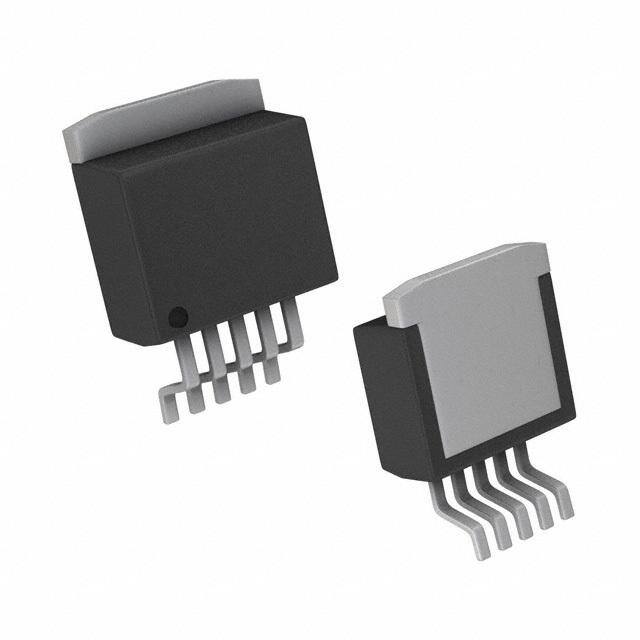
 Datasheet下载
Datasheet下载
